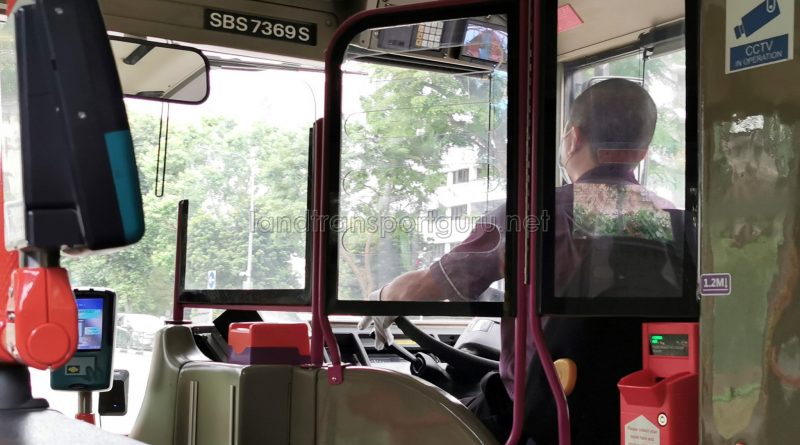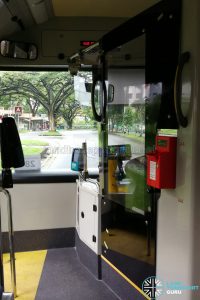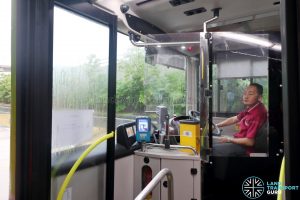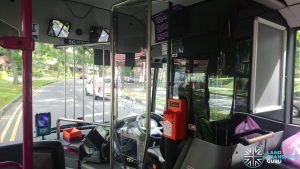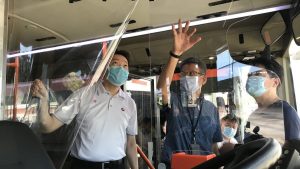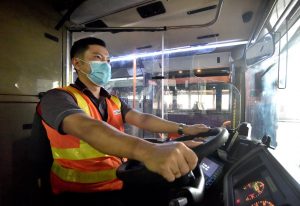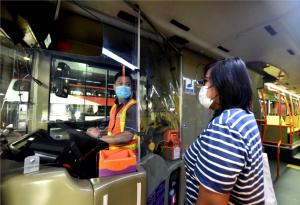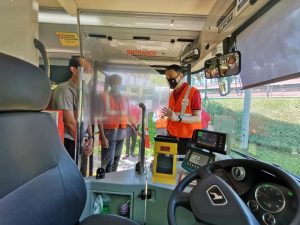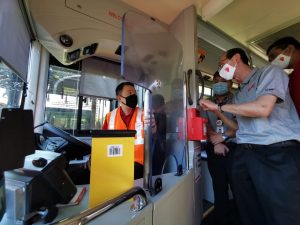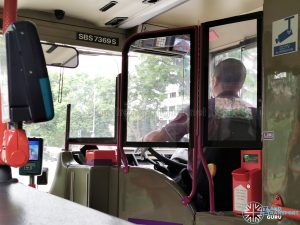In January 2018, the Land Transport Authority (LTA) commenced trials of Protective Screens installed on public buses in the Bus Captain cabin.
Initially, these screens were intended to deter assaults against Bus Captains and potential hijacks. However, in the midst of the COVID-19 pandemic in 2020, protective screens have been brought back into the spotlight to minimise contact between Bus Captains and passengers, in addition to tackling rising cases of assault against Bus Captains.
Background:
Driver Protective Screens are installed on public buses primarily to protect Bus Captains from physical assault. In Singapore, the rollout of protective screens on public buses have been limited to small-scale trials involving the retrofitting of screens onto existing buses. These screens provides a physical barrier between bus captains and commuters by isolating the driver’s cabin, and are typically used to protect drivers from assault. However, such screens can be costly to retrofit, and may interfere with the Bus Captain’s field of vision.
Places that have adopted protective screens for bus drivers include London in the United Kingdom and Victoria in Australia. Many bus manufacturers offer partial or full protective screens for their driver cabs.
Difficulties:
Retrofitting of such protective screens on existing buses also present some difficulty in accommodating the placement of existing equipment. Not only do Bus Captains need to enter and exit the driver’s cab, passengers must also be able to access existing fare collection equipment. For example, in the 2018 protective screen trial, a hole had to be cut into the acrylic driver’s shield to allow passengers to reach into the coinbox.
Some protective screens mitigate such problems by isolating the entire front dashboard of the bus behind the protective screen (as is the case in London), or utilize a camera/screen system to replace mirrors.
Initial Trial – January 2018
Main Article: Protective Screens for Drivers Trialled on Public Buses (2018)
A Land Transport Authority (LTA)-initiated 6-month trial involved the retrofitting of full-height protective screens on 16 buses, evenly allocated across 4 public transport operators.
A modified design of protective screen was installed on a Mercedes-Benz Citaro bus in June 2018, which featured metal bars instead of a plastic panel.
COVID-19 Pandemic – July 2020
Main Article: COVID-19: Protective Screens on public buses
SBS Transit installed protective plastic screens on 6 Volvo B9TL (CDGE) buses as part of a two-week trial starting in mid-July 2020.
Plastic Shield – September 2020
In late September 2020, SMRT presented a new polycarbonate shield primarily designed to deter assault. The shield is 12mm thick and fitted with a metal reinforcing arm to enhance impact resistance. An anti-glare film is applied on the upper portion of the plastic shield.
The shield was installed on a MAN A22 bus (SMB1421Y), but removed just a month later in October 2020.
In November 2020, the shield was installed on another MAN A22 bus (SMB1564T).
Reference: Melvin Yong 杨益财 – Facebook
SBS Transit 2nd Generation shields – November 2020
In November 2020, a revised design of protective shield was installed on several SBS Transit Volvo B9TL (CDGE) buses. These are spotted on:
- SBS7332Y, SBS7369S, SBS7431U & SBS7432S
A revised design featuring wires instead of transparent plastic were installed on buses in December 2020. These are:
- SBS7311H, SBS7429C
